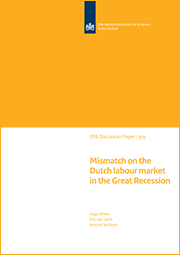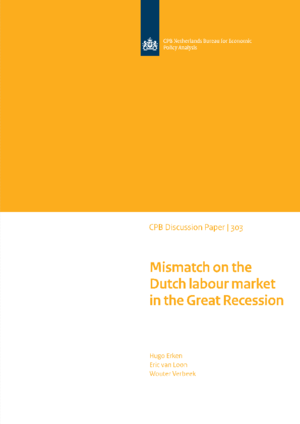Mismatch on the Dutch labour market in the Great Recession

The goal of this paper is to examine this hypothesis. We adopt an eclectic approach to study if mismatch has increased during the Great Recession. First, we examine the development of the Beveridge curve. We estimate so-called “steady-state” Beveridge curves based on underlying labour market flows. Outward shifts of these curves are associated with decreasing matching efficiency. Second, we construct a mismatch index which enables us to calculate the contribution of sector mismatch to the unemployment level. Our analyses show little support for the hypothesis that mismatch currently is a problem on the Dutch labour market. At the aggregate level, the Beveridge curve has not shifted outwards. Furthermore, at most one-seventh of Dutch unemployment can be attributed to sector mismatch, which is comparable to or below periods prior to the Great Recession.
